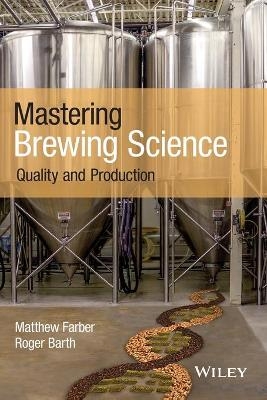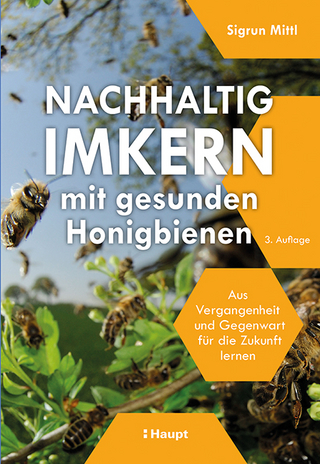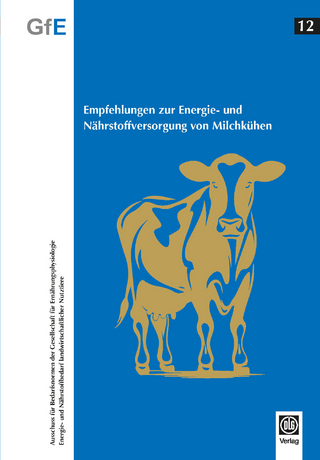
Mastering Brewing Science
John Wiley & Sons Inc (Verlag)
978-1-119-45605-6 (ISBN)
Mastering Brewing Science is a comprehensive textbook for the brewing industry, with coverage of processes, raw materials, packaging, and everything in between, including discussion of essential methods in quality control and assurance. The book equips readers with a depth of understanding to deal with problems and issues that arise during production of beer from start to finish, as well as statistical tools for continual quality improvement. Brewery operations, raw material analysis, flavor, stability, cleaning, and methods of quality control, as well as the underlying science, are discussed in detail.
The successful brewing professional must produce beer with high standards of quality, consistency, efficiency, and safety. With a focus on quality and on essential applications of biology, chemistry, and process control, Mastering Brewing Science emphasizes development of the reader's trouble-shooting and problem-solving skills. It is the ideal learning tool for all brewing programs or as a resource for current industry professionals. Features of this book include:
Comprehensive understanding through application. Presented in the logical order of the brewing process. All key principles of science are applied to beer production, facilitating a better understanding of both.
Check for understanding and problem solving. Each chapter includes a set of problems, questions, and case studies that reinforce understanding of the material.
Richly illustrated. Hundreds of unique, full-color illustrations, ranging from micrographs of spoilage bacteria to the inner workings of a beer keg, supplement clearly-written text, making this book easy to understand and appealing to the reader.
Emphasis on Quality and Safety. Covers the underlying science and essential methods in quality control with discussion of data management and experimental statistics to ensure consistency in beer production. Safety notes for brewing operations prepare the reader for a culture of safety at the workplace.
Glossary. A detailed and authoritative glossary sets the standard for beer and brewing terminology.
Matthew Farber, PhD, is the founder and director of the Brewing Science Certificate Program at the University of the Sciences in Philadelphia, where he is a faculty member in the Biology department. Roger Barth, PhD, has been a faculty member in the Chemistry department at West Chester University since 1985. He created and teaches a course on the Chemistry of Beer and is the author of its textbook: The Chemistry of Beer: The Science in the Suds (Wiley, 2013).
About the Authors xi
Preface xiii
Acknowledgments xv
1 Brewing Quality Overview 1
1.1 Ingredients 2
1.2 Brewing Overview 4
1.3 A Scientific History of Brewing 16
1.4 Introduction to Beer Quality 27
Check for Understanding 32
Case Study 33
Case Study Questions 34
Bibliography 34
2 Chemistry for Brewing 37
2.1 Atoms 37
2.2 Bonding and Compounds 44
2.3 Molecules 50
2.4 Intermolecular Forces 54
2.5 Structure of Molecules 57
2.6 Organic Chemistry and Functional Groups 59
2.7 Chemical Reactions 62
Check for Understanding 65
Bibliography 67
3 Biology for Brewing 69
3.1 Macromolecules 69
3.2 Membranes 90
3.3 Cellular Structures 93
3.4 The Central Dogma 95
Check for Understanding 103
Bibliography 104
4 Raw Materials 107
4.1 Water 108
4.2 Malt 125
4.3 Hops 148
Check for Understanding 162
Bibliography 164
5 Grain Handling and Milling 167
5.1 Malt Storage and Transfer 167
5.2 Milling 177
Check for Understanding 185
Case Study 185
Bibliography 186
6 Mashing 187
6.1 Starch Hydrolysis 187
6.2 Enzymes 189
6.3 Mashing Process 196
6.4 Mash Conversion Vessel Design and Operation 200
6.5 The Use of Adjuncts 209
6.6 Enzymes and Processing Aids 211
Check for Understanding 214
Case Study 215
Bibliography 216
7 Wort Separation 217
7.1 Wort Separation Processes 217
7.2 Flow and Pressure 225
7.3 Lipid Removal 227
7.4 Management of Spent Grains 228
Check for Understanding 229
Case Study 229
Bibliography 229
8 Boiling, Wort Clarification, and Chilling 231
8.1 Heat Transfer 233
8.2 Boiling Technology 236
8.3 Boiling Chemistry 247
8.4 Chilling 250
Check for Understanding 252
Case Study 252
Bibliography 253
9 Fermentation 255
9.1 Fermentation Process 255
9.2 Fermentation Reactions 275
9.3 Energy and ATP 278
9.4 Oxidation, Reduction, and NAD 280
9.5 Fermentation Equipment 282
9.6 Temperature Monitoring and Control 287
9.7 Yeast Handling and Repitching 293
9.8 Yeast Propagation 299
Check for Understanding 305
Case Study 306
Bibliography 307
10 Conditioning 309
10.1 Warm Conditioning 310
10.2 Clarification 313
10.3 Carbonation 319
10.4 Beer Aging 323
10.5 Analytical and Quality Control Procedures for Conditioning 325
Check for Understanding 328
Case Study 329
Bibliography 329
11 Packaging and Serving 331
11.1 Kegs and Casks 332
11.2 Gas Laws 337
11.3 Keg Dispense System 341
11.4 Bottles 350
11.5 Cans 351
11.6 Filling Bottles and Cans 353
11.7 Beer Service and Packaging Quality 360
Check for Understanding 366
Case Study 367
Bibliography 368
12 Flavor 369
12.1 Flavor Anatomy and Chemistry 370
12.2 Flavor Compounds 373
12.3 Off‐Flavors 378
12.4 Analysis and Quality Control to Monitor Flavor Consistency 388
Check for Understanding 391
Case Study 392
Bibliography 393
13 Color, Foam, and Haze 395
13.1 Light 395
13.2 Color 399
13.3 Foam 403
13.4 Haze 414
Check for Understanding 423
Case Study 423
Bibliography 424
14 Biological Stability 427
14.1 Identifying Spoilage Microorganisms 428
14.2 Microbial Stabilization Methods 440
14.3 Analytics and Quality Control of Microorganisms 446
Check for Understanding 457
Case Study 458
Bibliography 458
15 Mathematics of Quality 461
15.1 Statistics for Quality 461
15.2 Control Charts 466
15.3 Dimensions, Units, and Conversions 469
15.4 Brewing Calculations 471
Check for Understanding 475
Case Study 476
Bibliography 476
16 Cleaning, CIP, and Sanitization 477
16.1 Cleaning a Brewery 478
16.2 Clean in Place 480
16.3 Cleaning Chemicals 484
16.4 Sanitizers 487
16.5 Analysis and Quality Control of Cleaning Effectiveness 489
Check for Understanding 491
Case Study 491
Bibliography 492
Glossary 493
Index 551
| Erscheinungsdatum | 27.07.2019 |
|---|---|
| Verlagsort | New York |
| Sprache | englisch |
| Maße | 152 x 226 mm |
| Gewicht | 680 g |
| Themenwelt | Technik |
| Weitere Fachgebiete ► Land- / Forstwirtschaft / Fischerei | |
| ISBN-10 | 1-119-45605-3 / 1119456053 |
| ISBN-13 | 978-1-119-45605-6 / 9781119456056 |
| Zustand | Neuware |
| Haben Sie eine Frage zum Produkt? |
aus dem Bereich



